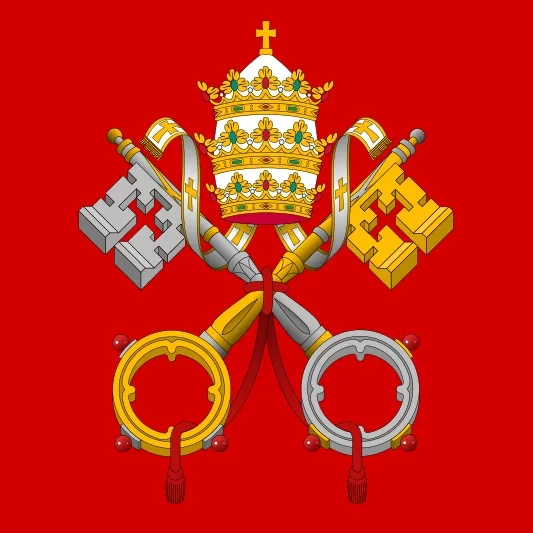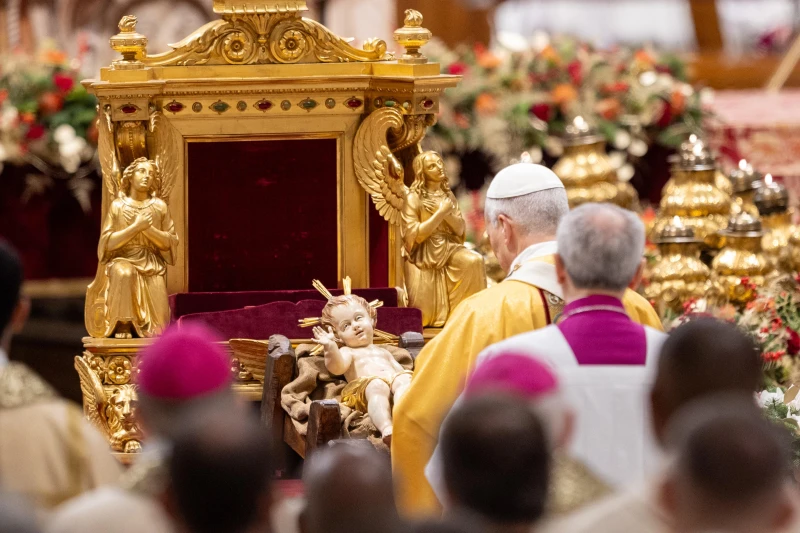Pope Francis meets with Ecumenical Patriarch Bartholomew I at the Vatican on Oct. 4, 2021. / Credit: Vatican Media
Rome Newsroom, Nov 30, 2023 / 11:13 am (CNA).
On the feast of St. Andrew the Apostle, Pope Francis sent a message to Ecumenical Patriarch Bartholomew I of Constantinople expressing his “fraternal affection” and reflecting on the “deep bonds of faith, hope, and charity” between the two churches.
The pope opened the letter by focusing on the journey of reconciliation between the two churches, noting that the feast of St. Andrew precedes the historic meeting between Pope Paul VI and Ecumenical Patriarch Athenagoras in Jerusalem in January 1964.
“That encounter was a vital step forward in breaking down the barrier of misunderstanding, distrust, and even hostility that had existed for almost a millennium. It is noteworthy that today we remember not so much the words and statements of those two prophetic pastors but above all their warm embrace,” the pope said in his letter.
“The example of Pope Paul VI and Patriarch Athenagoras shows us that all authentic paths to the restoration of full communion among the Lord’s disciples are characterized by personal contact and time spent together,” Francis continued.
That meeting was an inflection point in the Catholic-Orthodox relationship, from one of estrangement to one of dialogue, as it was the first time since 1483 that a pope and an ecumenical patriarch met.
Pope Francis also noted that “it is highly significant that this journey of reconciliation, increasing closeness, and overcoming of obstacles still impeding full visible communion began with an embrace, a gesture that eloquently expresses the mutual recognition of ecclesial fraternity.”
Pope Francis every year sends a message on the feast of St. Andrew the Apostle to the ecumenical patriarch, who is the successor of St. Andrew and the “first among equals” in the Eastern Orthodox Church.
This year the pope expressed his “gratitude” and thanked the patriarch for his attendance at the ecumenical prayer vigil ahead of the opening of October’s Synod on Synodality. In a press release before the event, the Holy See said that the vigil was prepared in order to “emphasize the centrality of prayer in the synodal process, which is a spiritual process” and “underline the articulation between the synodal path and the ecumenical path.”
“Your personal support and that of the Ecumenical Patriarchate, expressed also through the participation of a fraternal delegate in the work of the assembly, are a great source of encouragement for the fruitful continuation of the ongoing synodal process in the Catholic Church,” Pope Francis said in his letter.
The prayer vigil was also attended by other religious leaders including Archbishop Justin Welby of Canterbury, Coptic Pope Tawadros II, and Pastor Anne Burghardt of the Lutheran World Federation.
In Instrumentum Laboris, the Vatican’s working document that guided Synod on Synodality discussions, the theme of ecumenism featured prominently.
“Indeed, both synodality and ecumenism are rooted in the baptismal dignity of the entire people of God. Together they invite renewed commitment to the vision of a missionary synodal Church. They are processes of listening and dialogue and invite us to grow in a communion that is not uniformity but unity in legitimate diversity. They highlight the need for a spirit of co-responsibility, since our decisions and actions at different levels affect all members of the body of Christ. They are spiritual processes of repentance, forgiveness, and reconciliation in a dialogue of conversion that can lead to a healing of memory,” the document reads.
Francis closed his Nov. 30 letter by writing that both churches are “in service to humanity, especially those affected by poverty, violence, and exploitation.” The Holy Father implored for peace.
“Let us fervently pray to God, our merciful Father, that the clamor of arms, which brings only death and destruction, may cease, and that government and religious leaders may always seek the path of dialogue and reconciliation,” he wrote.











